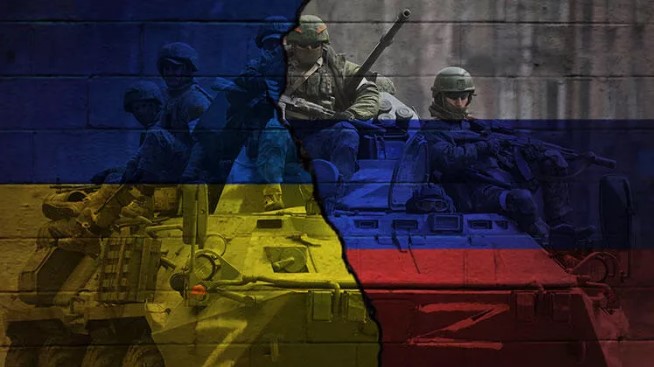What did the Russia-Ukraine war change in the world in 6 months?

While Russia’s military operation against Ukraine is in its 6th month today, this development has revealed many new dynamics on a global scale. In the post-Cold War era, the US-Russian polarization has become this sharp for the first time. However, this time, as a result of globalization, the economy, energy and food crisis has reached perceptible dimensions all over the world. Here are the projections of the Russia-Ukraine war on the world in the first 6 months…
GLOBAL ECONOMY SHAKED
After The Sanctions Against Russia , global inflation reached record levels. In The ‘ World Economic Outlook’ report of the IMF (International Monetary Fund) , it was stated that if the effects of the Ukraine War and inflation are not brought under control, the world may come to the brink of the worst economic recession of the last 50 years. In fact, the headline of ‘gloomy and uncertain’ was used in the IMF’s evaluation report in July. At the beginning of the year, the inflation forecast for developed economies increased from 5.7 percent to 6.6 percent, while the forecast for developing countries was revised to 9.5 percent. It is stated that the biggest result of this situation, which manifests as ‘hyperinflation’ in some countries, will be social unrest triggered by rising food and energy prices.
THE ENERGY CRISIS HAS REACHED A STUNNING SIZE
The risk of Russia suddenly stopping gas flow to Europe due to the war in Ukraine has left Europe with an energy crisis like never before. Europe, which wants to reduce its energy dependence on Russia, has reached an agreement with the USA to provide more liquid natural gas (LNG). This pushed Europe to dependency on LNG purchases from the USA this time. In this way, the USA gained an energy and economy advantage over Europe.
CLIMATE CRISIS IN THE SHADOW
The search for alternative energy sources caused by the energy crisis in Europe forced countries to suspend their climate policies and return to nuclear energy. In Germany , where the Green Party is the ruling partner, it was stated that the natural gas imported from Russia will not meet the needs this winter, and it has been announced that the revitalization of the nuclear power plants, which are planned to be completely terminated this year, is among the options. Similar statements came from France. As Europe has been battling record forest fires and storms this year, the effects of the climate crisis have become even more striking.
FOOD SAFETY AND THE THREAT OF HUNGER
While Ukraine and Russia meet about 30 percent of the world’s wheat needs, since the war began, Russia’s wheat exports have been severely restricted. Ships loaded with grain in Ukrainian ports captured by Russia were also unable to move until recently. As such, serious disruptions occurred in the food supply chain. The Food and Agriculture Organization (FAO) announced that grain export restrictions could increase food and feed prices in the world market by 22 percent. While The UN World Food Program announced that 22 million people are threatened by hunger in the Horn of Africa due to the Drought Reaching Record Levels, The Risk Of Global Hunger Has Reached Record Levels With The Disruption In The Food Supply Chain.
THE NEW WAVE OF INTERNATIONAL MIGRATION
While millions of people have already left their countries as a result of the political and economic instability in their countries, a new wave of immigration broke out with the Russian occupation of Ukraine. According to the European border agency Frontex, 7.7 million Ukrainian citizens have traveled to European Union countries since February, when Russia’s invasion of Ukraine began. According to the UN High Commissioner for Refugees (UNCHR), more than 7 million people have been displaced within the country. The political and economic cost of this to the receiving countries is a big question mark.
DEFENSE EXPENDITURES INCREASED
According to the report of the Stockholm International Peace Institute (SIPRI), global military spending reached a record 2.1 trillion dollars in 2021, despite the pandemic conditions. The countries with the highest military spending were the USA, China, India, England and Russia, respectively. However, in the current picture, it is estimated that this record will renew itself this year, with Russia’s invasion of Ukraine and the military support given to Ukraine, primarily from the USA and European countries.
NATO AGAINST THE STAGE
NATO (North Atlantic Treaty Organization), established in 1949 as a defense pact against Soviet Russia after the Second World War, was revived by regaining its functionality. The organization, whose function was questioned from time to time in the post-Cold War period, consolidated its existence after Russia’s invasion of Ukraine. Sweden and Finland, which have pursued a policy of neutrality for years, have recently applied to join NATO. Going on the path of enlargement with its prospective new members, NATO has once again become the front of the Western defense against Russia.
RUSSIA’S ‘INVESTIVAL’ PERCEPTION IS SHAKED
Russia, which has been using the ‘Ukrainian bat’ as a trump card against the West for many years, destroyed the ‘perception of invincibility’ when it invaded Ukraine in real terms. The war lasted longer than Russia had anticipated, as Ukraine firmly resisted with national coordination and Western weaponry. The Russian army, which first surrounded the capital Kiev, then changed its tactics and gave priority to the seaside south of Ukraine, and Donbas and Donetsk, where pro-Russian separatists were densely populated. In Russia, comments were made that the government of Vladimir Putin was stuck in the ‘Ukraine quagmire’. It was understood that Russia’s weapon and military superiority was not very effective in the field against UAVs and new generation weapons that Ukraine procured from Western countries. According to US data, in the first 6 months of the war, approximately 80,000 Russian soldiers were killed or wounded in the war.
‘NORMALITY’ IS THE NEW RULE
After Russia’s reckless invasion of Ukraine, the ‘realist theory’, which is based on the fact that the strongest is decisive in international relations, gained weight. It turned out that ‘hard power’, which puts military solutions in the center instead of ‘soft power’, still dominates. When the USA and Europe took a position against Russia, Russia-China got closer. After Russia’s invasion of Ukraine, this time Russia’s ally, China, intimidated Taiwan, with which it had been in conflict for many years.
THE BALANCES CHANGED IN THE SYRIAN WAR
When Russia almost directed its resources to the Ukrainian operation, it moved away from the position of ‘the biggest supporter of the Damascus regime’. Although the Bashar Assad administration recognized the independence of Donbas and Dontesk, which were occupied by Russia, when the burden of Russia, which is its closest ally, became heavy, it opened the door to contact with the Gulf countries, which it had been angry with for many years. The Gulf countries, Egypt and Israel, who were afraid of Iran’s penetration into the vacuum that will arise from Russia in Syria, also started to look for ways to come to an agreement with the Damascus regime.



